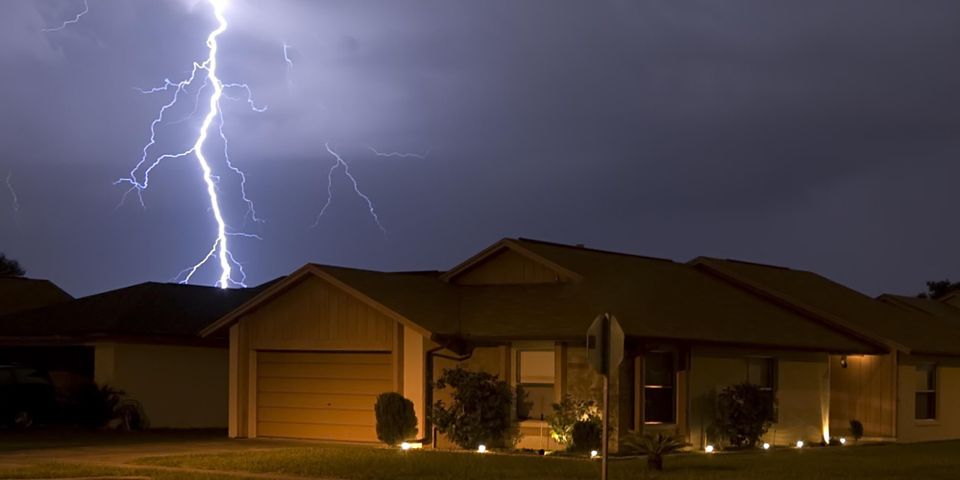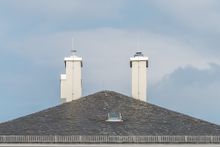
Warm thunderstorms are a common occurrence during the summer. Because your roof is directly exposed to lightning, direct contact could damage your property. Below is a comprehensive overview of lightning rods—which can help protect your home—and why you should hire an electrician to install one.
What Is a Lightning Rod?
It’s a metal rod that’s attached to the highest point of a roof. It’s about 12 inches long and designed to intercept the voltage from lightning and transfer it directly to the ground. This protects your property from storm damage. It was first invented by Benjamin Franklin in order to prove that lightning was electricity.
How Do They Work?
 Lightning rods consist of two components: a metal rod, which attracts the lightning, and a conductive grid that is buried beneath the ground on your property. The conductive grid is designed to divide and dissipate the electricity. Lightning is attracted to metal conductors; when it hits the metal rod, the voltage will be drawn to the ground. This device decreases the likelihood of damage.
Lightning rods consist of two components: a metal rod, which attracts the lightning, and a conductive grid that is buried beneath the ground on your property. The conductive grid is designed to divide and dissipate the electricity. Lightning is attracted to metal conductors; when it hits the metal rod, the voltage will be drawn to the ground. This device decreases the likelihood of damage.
Should You Install One?
If you live in an area where there are frequent storms and lightning strikes, having an electrician install a lightning rod will be beneficial. It’s also recommended for homes with multiple stories and tall overhanging trees due to the risk of lightning making contact with the highest point. For instance, air does not conduct electricity, while lightning follows the highest marker in the sky, as it presents the path of least resistance. This highest point might be buildings or trees.
When you’re ready to install a lightning rod on your roof, contact the electricians at Zelek Electric in New London County, CT. For over 30 years, these contractors have offered quality electrical services to residential and commercial clients throughout the area. Call (860) 434-9726 today to set up an appointment with an electrician, or visit their website to learn more.
About the Business
Have a question? Ask the experts!
Send your question

